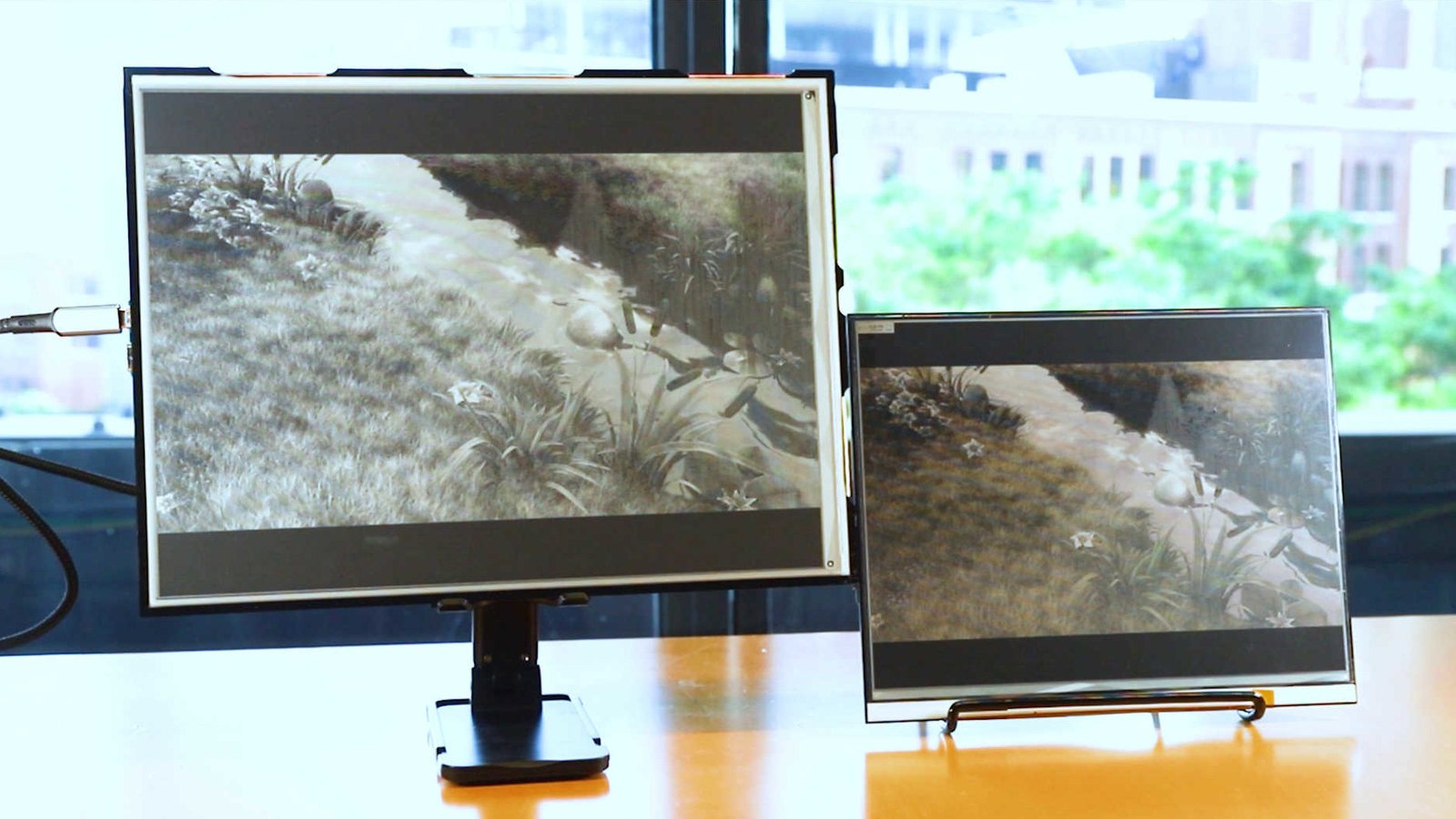Imagine reading your Kindle in full sunlight without glare, skimming through documents smoothly, and even playing stylized games, all with the same screen. This is no longer just a dream: a little startup called Modos is pushing e-paper displays into new territory, making them not just for e-books, but for everyday use. With the Modos e-paper kit, this vision is moving closer to reality.
What Makes E-Paper So Special (And What’s Been Holding It Back)
-
What is e-paper?
E-paper (sometimes called electrophoretic displays) works by using tiny charged particles suspended in fluid; electricity moves those particles to display black, white, or shades of grey. The effect is like ink on paper: high contrast, very comfortable on the eyes, great viewing angles, and almost invisible even under bright sunlight.
-
The old problem: sluggish refresh.
Because of how the particles have to move, typical e-paper screens refresh very slowly. Many only manage ~10 frames per second (10 Hz) or even less. That’s okay for static text, but scrolling, animation, or video looks laggy, flickery, or just plain frustrating.
What Modos e-paper kit Is Doing Differently
- 75 Hz refresh rate – That’s a huge leap. Now you can get updates per second comparable to some basic LCDs. As IEEE Spectrum stated, scrolling from one page to another, dragging windows, and even light animations become much smoother.
- Open-source controller (“Caster”) – Instead of a closed, proprietary system, Modos designed a controller that treats each pixel more intelligently. In simpler terms: instead of flipping the whole screen at once (slow & inefficient), it updates parts of the screen as needed. All of this entails less waiting and less lag.
- Plug-and-play with existing panels – The Modos e-paper kit includes adapters so you can use different e-paper displays (from 4.3 up to 13 inches) that are already out there. If you have an older e-reader or panel, there’s a chance you can reuse it, which means less waste and more flexibility.
- Modes that adapt to what you’re doing – You have the liberty to choose different modes. For instance, you can choose a simple binary (black/white) mode for razor-fast response. There is also the grayscale mode for a more polished look. Similarly, for video or animations, you can opt for the higher refresh modes. You can choose different modes depending on the content types you are viewing.
Why It Matters: Where This Could Be a Game Changer
- E-readers/reading surfaces get better: reading, highlighting, searching, etc., will feel more responsive.
- Gaming & art with stylized visuals, or point-and-click games, comic book art, or graphic novels could look amazing on such displays. As PCGamer pointed out, Return of the Obra Dinn, with its high-contrast, dithered art, can be a perfect example.
- Low-power devices benefit tremendously: e-paper uses far less energy when displaying static content, which means devices that spend time idle or displaying mostly text could last much longer on a charge.
- Accessibility & eye strain: screens that are more paper-like are easier on the eyes, especially for long reading, under bright light (outdoors), or by people sensitive to glare.
Some Challenges & What We Should Watch
- Even with 75 Hz, moving images (video, full motion) may still lag compared to high-end LCDs or OLEDs designed for fast refresh. So, it’s still not replacing high-fps gaming monitors.
- Sourcing the right panels can be a hurdle. Many e-paper panels are made for specific devices (like e-readers), not open monitors, so dimensions, connectors, and aspect ratios vary.
- Price & availability: While preorders have begun, shipping is slated for January 2026, and costs (especially for larger panels) can still be significant.
What the Modos e-Paper Kit Means For You & What to Do Next
If you’re someone who reads a lot, sketches, does light coding, or enjoys stylized gaming, this could be your chance to try something new. Even if you aren’t a tech-enthusiast, the idea of a screen that’s easier on the eyes, uses less power, and still keeps up with scrolling, etc., is pretty appealing.
If you want to jump in, here are some ideas:
- Preorder the Modos e-paper kit (if budget allows) to try out the 75 Hz e-paper display.
- Check whether your existing e-paper panels (from older e-readers, etc.) can work with Modos’s controller/adapter. Might save money.
- Try out content suited to this style — reading, comics, visual novels, art, games with limited animation or stylized motion. See what works best.
- Follow the community & open-source updates – since the controller and API are open source, contributors will likely make improvements over time (new modes, better compatibility, firmware updates, etc.).
Conclusion
The move by Modos to push e-paper refresh rates up to 75 Hz, using open hardware, is more than just a geeky novelty. It’s a step toward screens that combine the best of both worlds: the comfort and low power of paper, and the responsiveness most of us expect from modern devices. The impact could ripple through e-readers, low-power laptops, gaming devices, art tools, and more.
If there was ever a time to reimagine what “screen time” feels like, this might be it.


